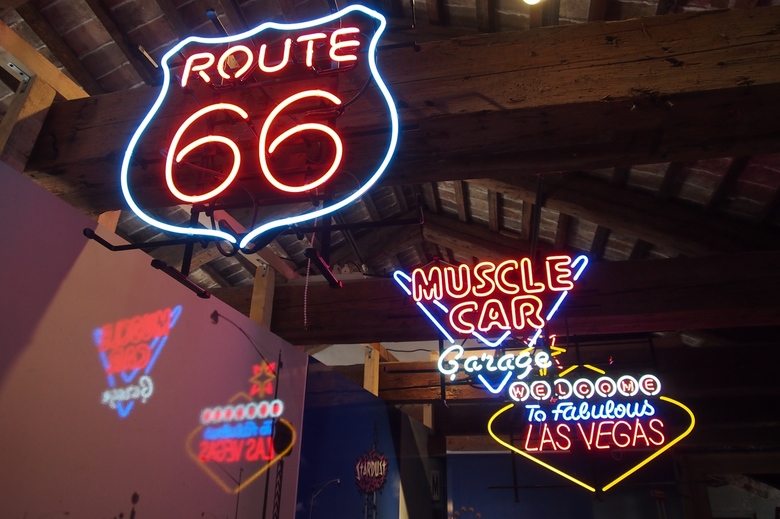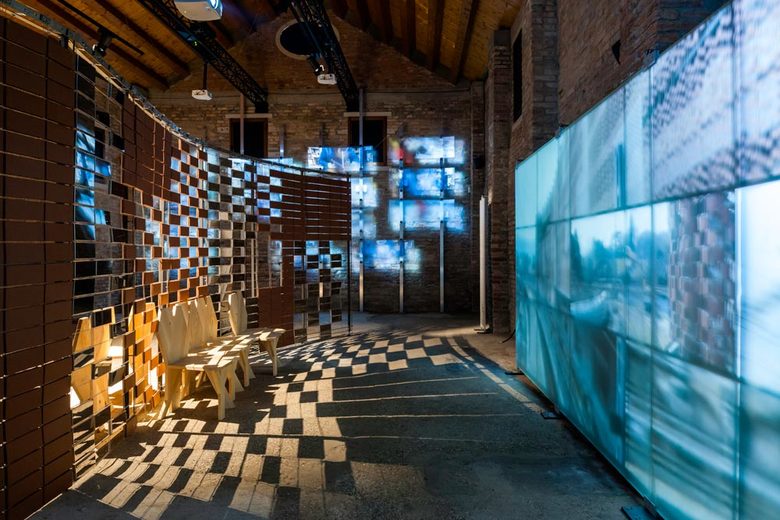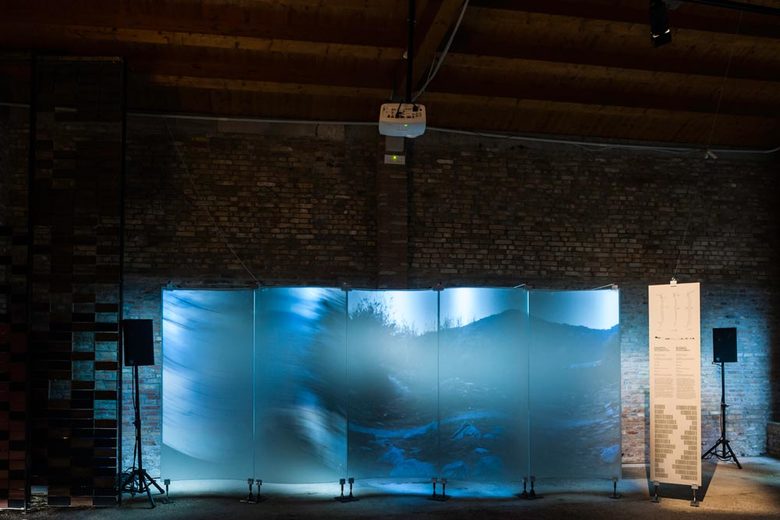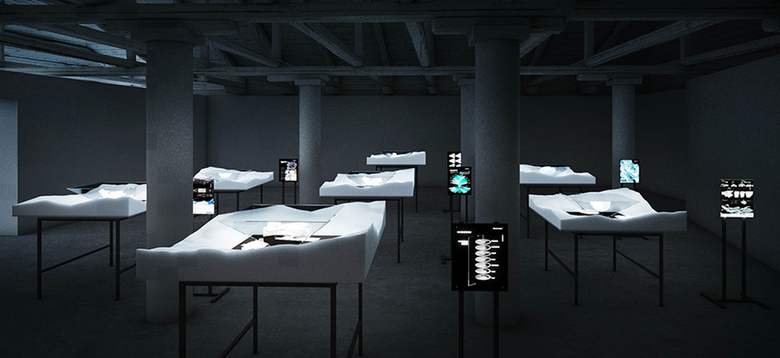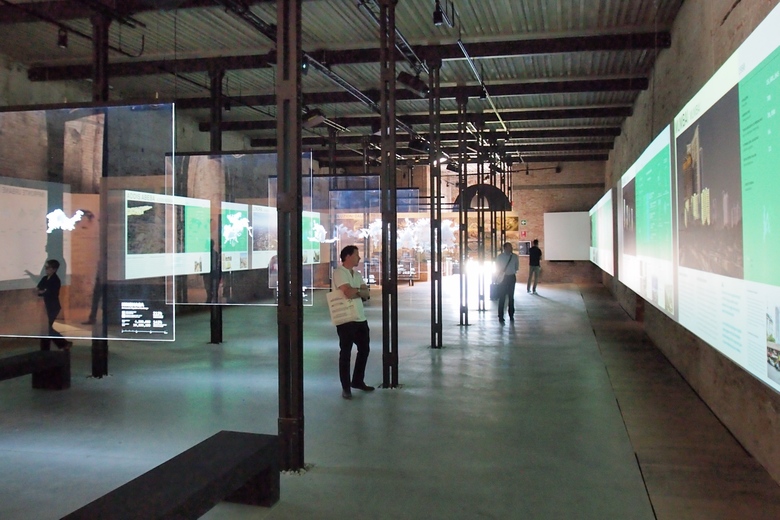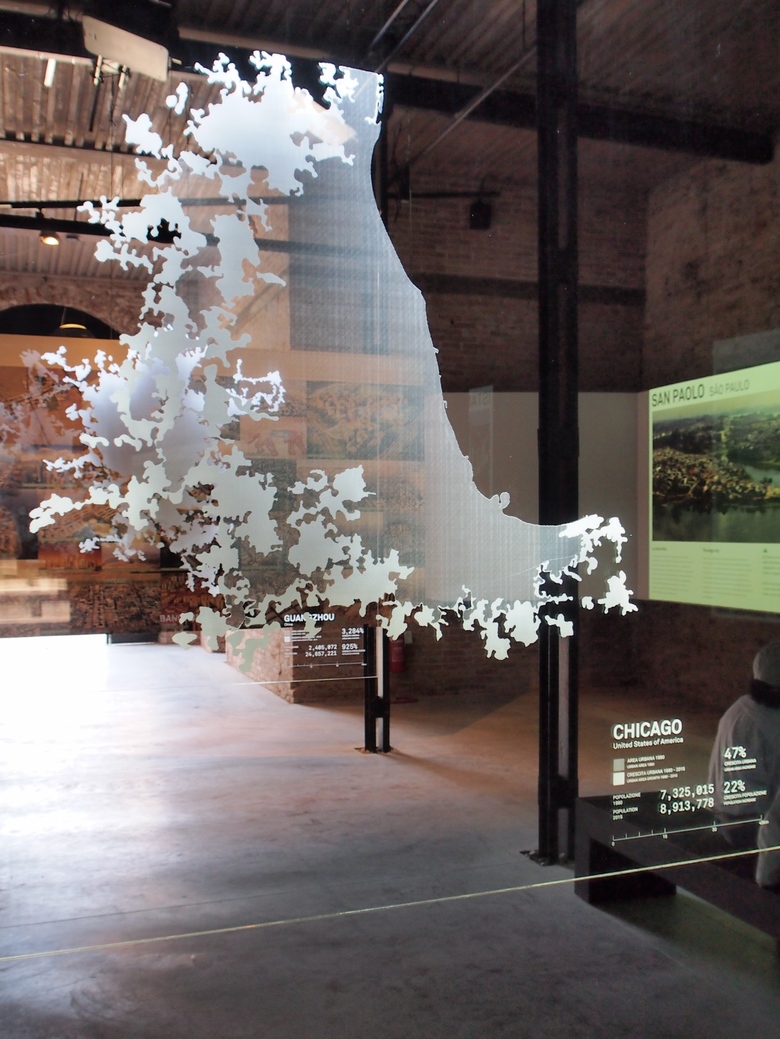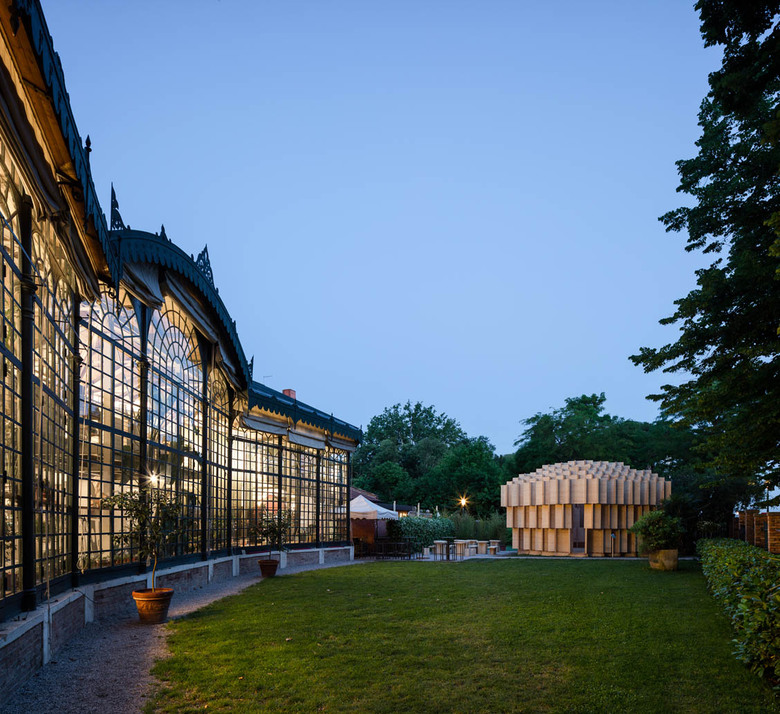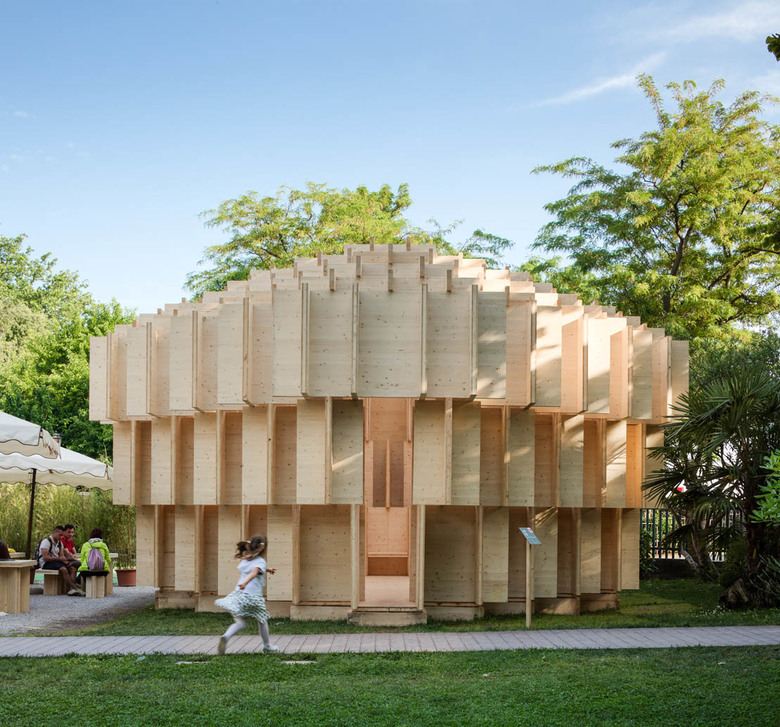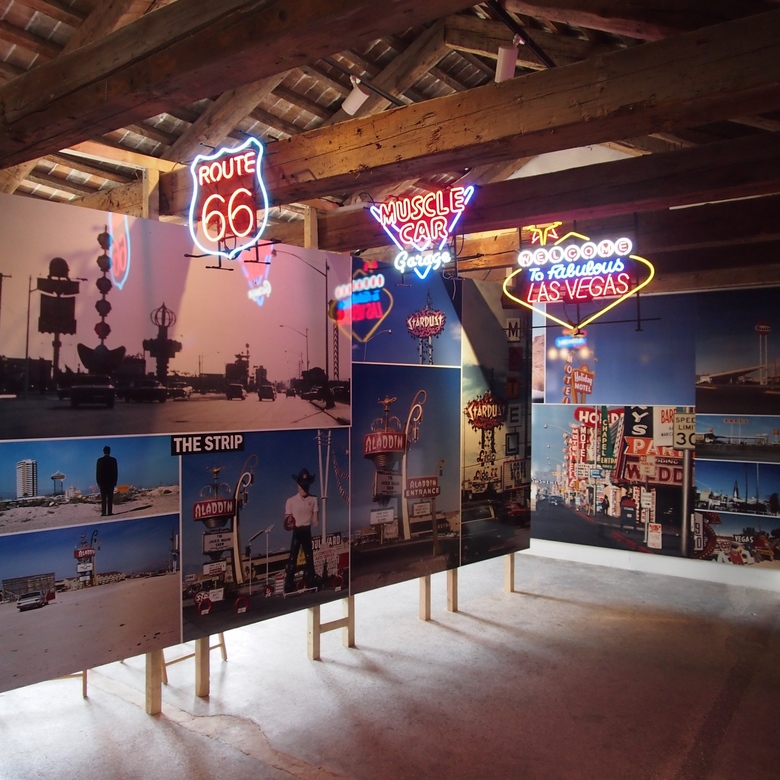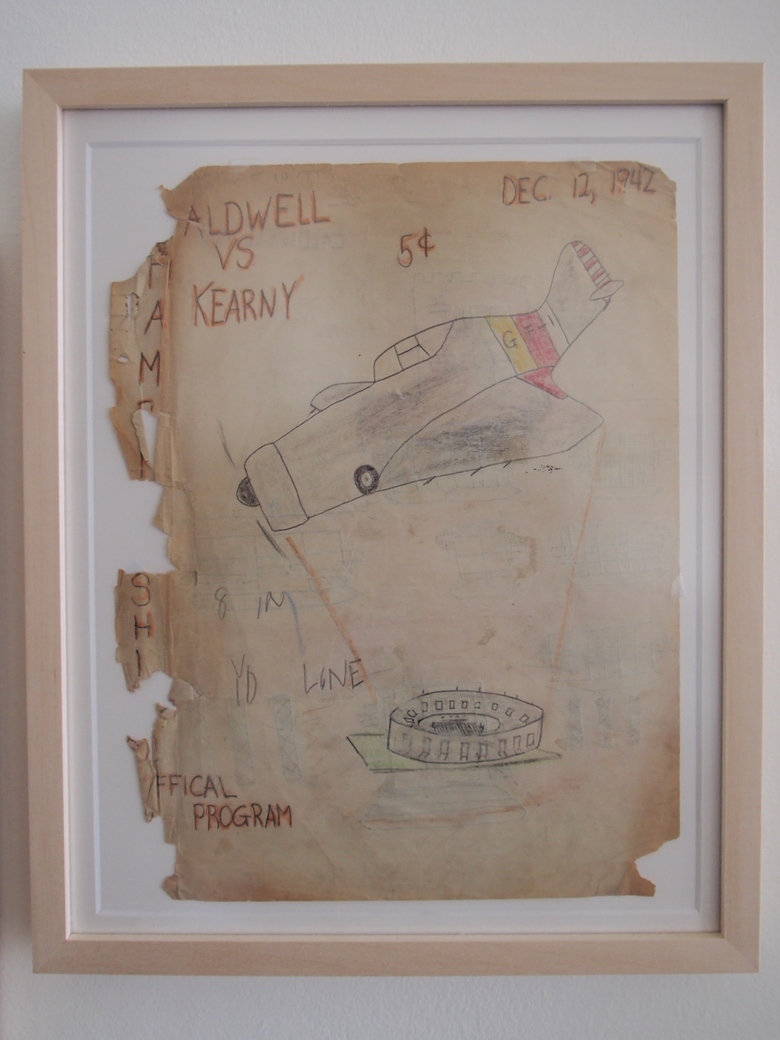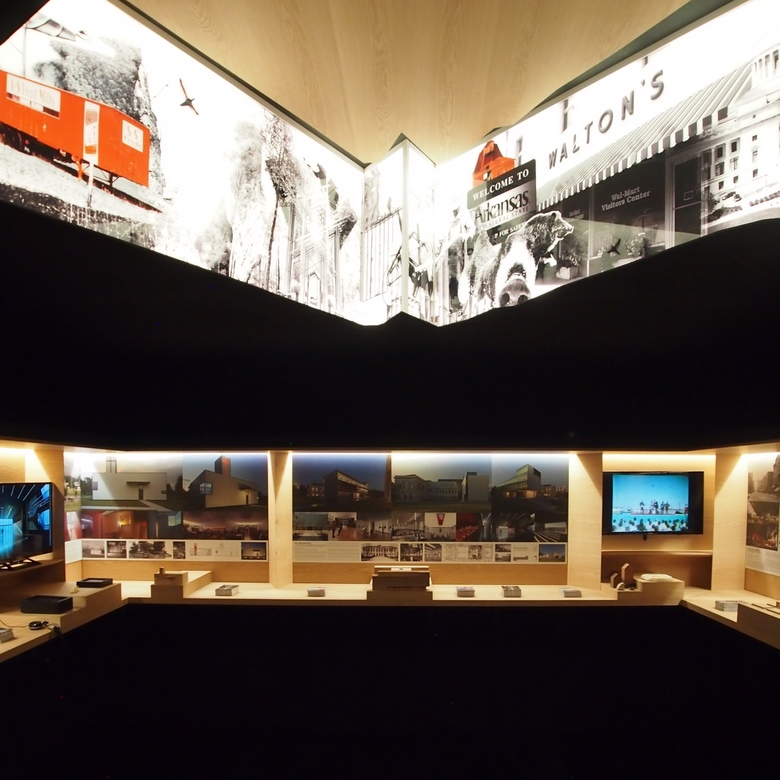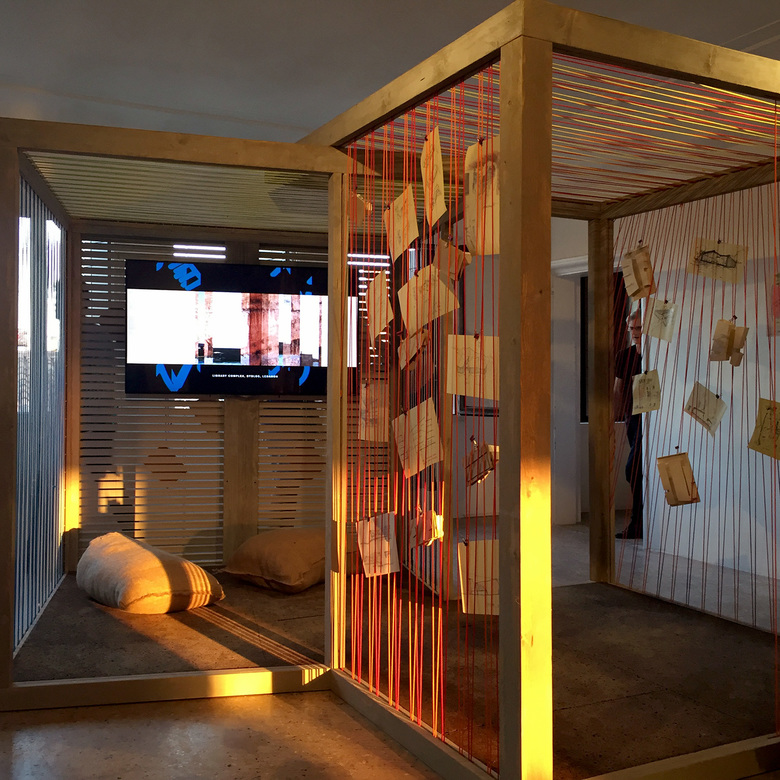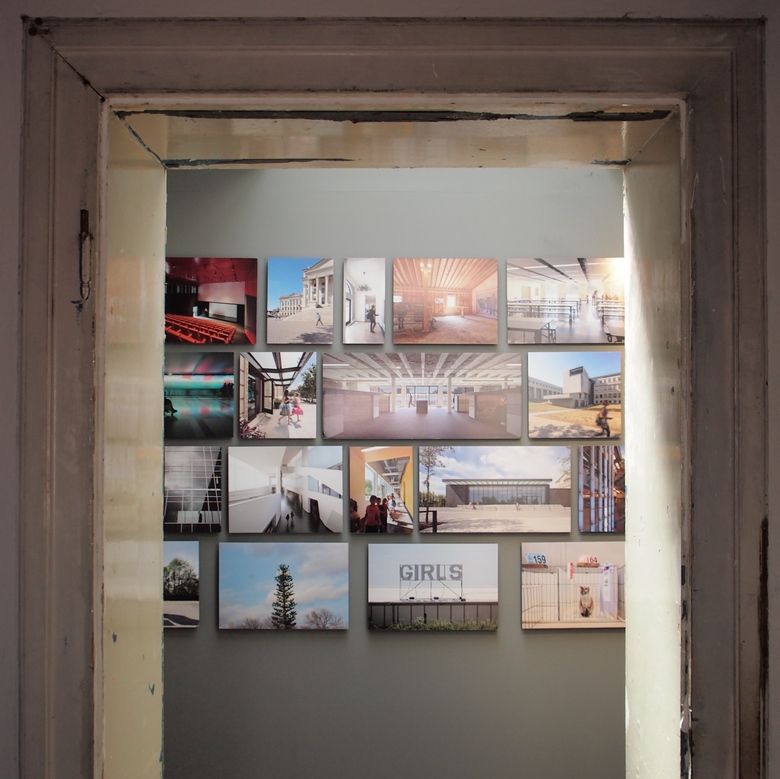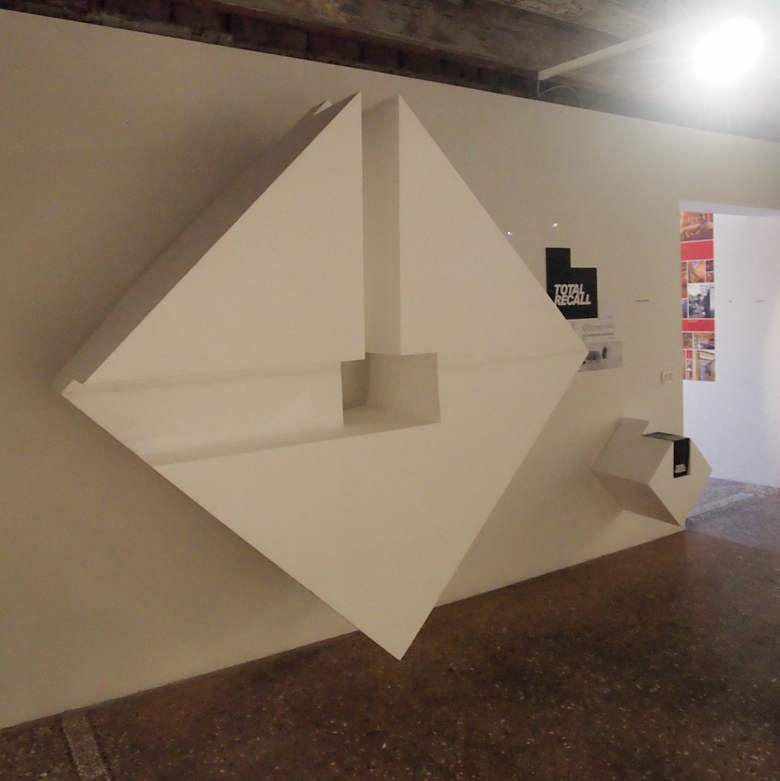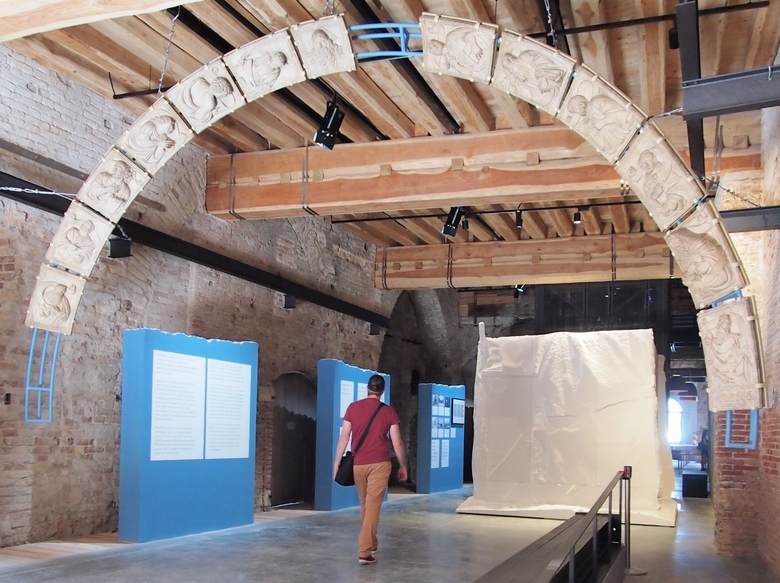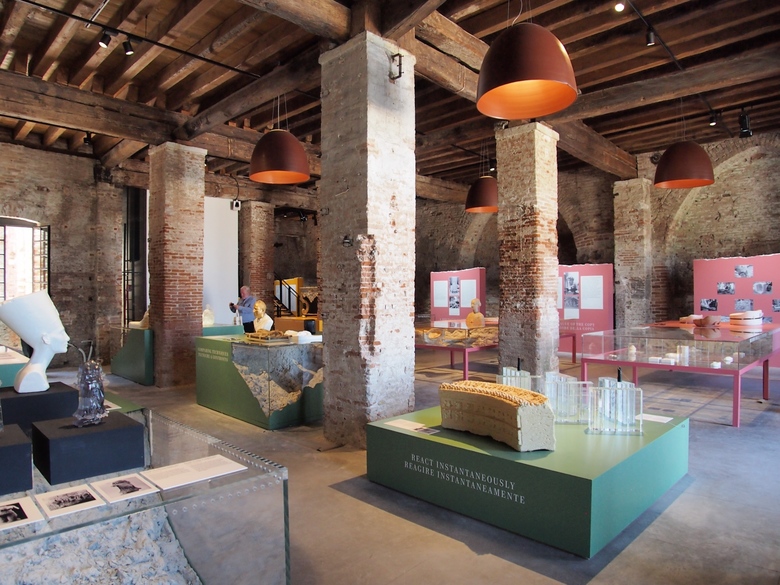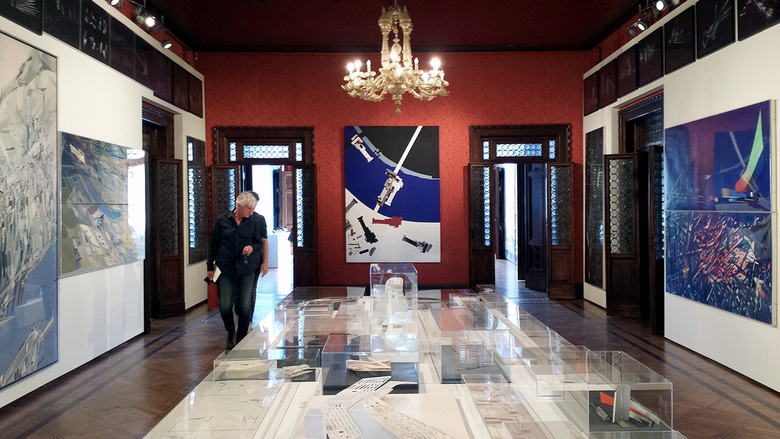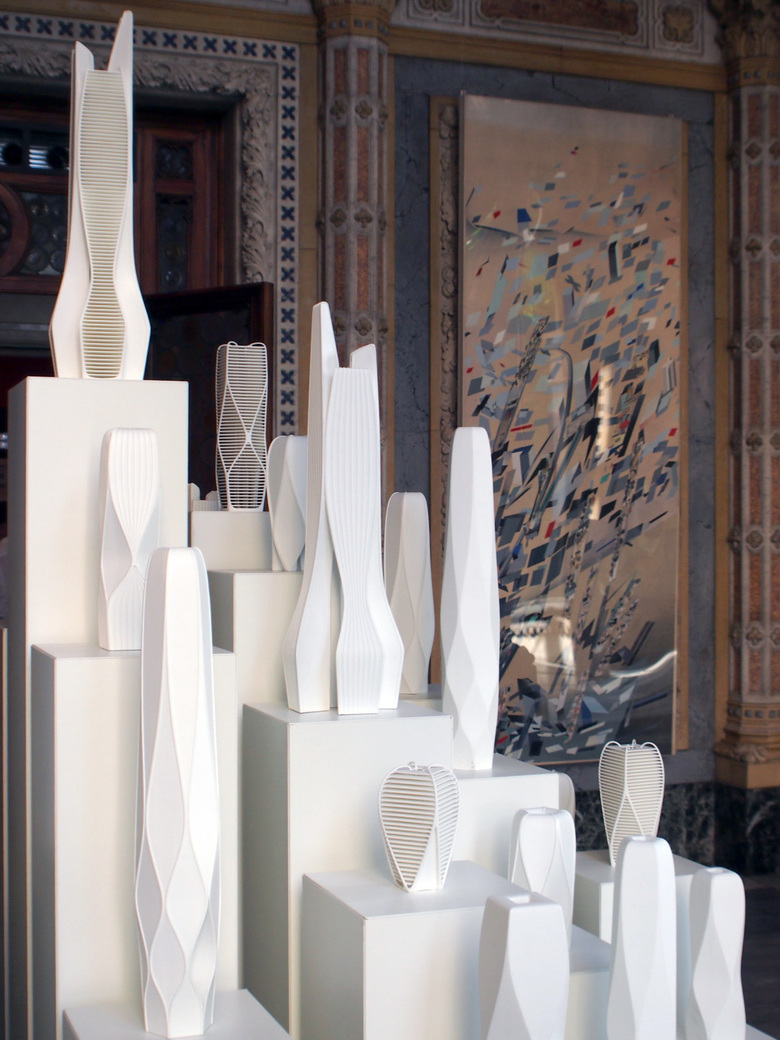'Time Space Existence' and Other Collateral Events at the Biennale
John Hill
11. de juliol 2016
Denise Scott Brown's contribution to Time-Space-Existence (Photo: John Hill/World-Architects)
In the third and final segment of our three-part survey of the major components of the 2016 Venice Architecture Biennale, here are a seven of the Collateral Events and Special Projects that World-Architects visited in Venice.
The 2016 Venice Architecture Biennale – aka the 15th International Architecture Exhibition – is made up of three main components: Alejandro Aravena's Reporting from the Front exhibition, which takes place in the Arsenale and the Giardini's Central Pavilion; 65 National Pavilions that are located in the Giardini, the Arsenale and spread throughout Venice; and 19 collateral events that, per the Biennale, "are admitted by the curator and ... offer a wide range of contributions and participations that enrich the diversity of voices that characterizes the exhibition of Venice."
For the first time, this Biennale also includes a trio of Special Projects that address the exhibition theme through applied arts and urbanism. Additionally, a number of architecture installations outside of the official Biennale program take place during the run of the exhibition, taking advantage of the architects flocking to Venice between 28 May and 27 November 2016 to take in the Biennale. With so much to see in Aravena's exhibition and the national pavilions, it was difficult to check out many of the collateral events, special projects and other installations. Nevertheless below is a roundup of what we did see – from A to Zaha.
Aftermath_Catalonia in Venice
Catalonia, as most people know, is a region of Spain with Barcelona at its heart. Given that it is a region and not a country, Catalonia cannot have an official national pavilion at the Biennale; therefore its pavilion is relegated to a collateral event. Situtated on the island of San Pietro di Castello, halfway between the Giardini and the Arsenale, Aftermath_Catalonia in Venice. Architecture beyond architects presents seven recent projects in film format. Curated by architects Jaume Prat and Jelena Prokopljević, and film director Isaki Lacuesta, the space's undulating walls, screens and chairs invite Biennale visitors to sit down for a little while and take in the audio-visual installation focused on "lived architecture."
Aftermath_Catalonia in Venice (Photo: Iñigo Bujedo Aguirre)
Aftermath_Catalonia in Venice (Photo: Iñigo Bujedo Aguirre)
The Antarctic Pavilion
The 65 national pavilions represent countries on six continents – all but Antarctica. Curator Nadim Samman sees the frozen continent as a cultural place and this installation (existing outside of the official programming in the small, un-palatial Fondaco Marcello overlooking the Grand Canal) displays projects by Hani Rashid (of Asymptote Architecture) and the Institute of Architecture, University of Applied Arts Vienna. The projects deal with practical issues – food production, technology infrastructure, scientific research, energy production – that yield fantastical forms clearly sprung from the working in the computer environment. The designs are displayed through videos and hologram-like projections within a darkened room – a dramatic display that makes them looking convincingly correct in their icy context.
The Antarctic Pavilion (Photo: Courtesy of the Antarctic Pavilion)
The Antarctic Pavilion. L: Antarctica Bioprospecting Station; R: Antarctica Oceanic Research Center and Fish Farm (Photo: Courtesy of the Antarctic Pavilion)
Conflicts of an Urban Age
Organized by the London School of Economics Cities, Conflicts of an Urban Age is one of three special projects in the 15th International Architecture Exhibition. Located in the Arsenale's Sale d’Armi building, the exhibition presents data and imagery on about a dozen cities, most of which have seen enormous growth since 1990: London (28% growth), Manila (62% growth), Kinshasa (215% growth!). The exhibition aims to provide "a context for understanding the benefits of well-considered urban planning and design on achieving more equitable and balanced cities." Its timing is apt, since the United Nations will hold Habitat III in Quito in October, focusing on sustainable urban development. As a precursor to that major event, the Biennale will host the Urban Age “Shaping Cities” conference from 14-15 July to "investigate how people, institutions, policymakers, investors and designers affect the physical form of cities, and how this impacts on the way we live in them."
Conflicts of an Urban Age (Photo: John Hill/World-Architects)
Conflicts of an Urban Age (Photo: John Hill/World-Architects)
The Forests of Venice
Longtime visitors to the Venice Biennale have made the walk along the tree-lined Viale Giuseppe Garibaldi numerous times en route from the Giardini to the Arsenale and vice-versa, passing the Serra Dei Giardini. The cafe is still open, but this year the 1894 greenhouse is home to the collateral event The Forests of Venice, an installation initiated by Kjellander + Sjöberg Architects and curated by Jan Åman. Venice is built upon millions of trees driven into the lagoon, so it's a fitting venue for an exhibition arguing that wood is the best material for addressing climate change and other 21st-century social and environmental problems. Seven research proposals are located in the greenhouse, while a striking structure in wood by Kjellander + Sjöberg sits in front, drawing people into the exhibition as they walk about the Biennale.
The Forests of Venice (Photo: Adam Mørk)
The Forests of Venice (Photo: Adam Mørk)
Time Space Existence
GAA Foundation's Time Space Existence exhibition has been a staple of the last few architecture Biennales. Located predominantly in Palazza Bembo overlooking the Grand Canal and Palazzo Mora, which also serves as the venue for the inaugural Philippines national pavilion, the exhibition presents the work of over 100 architects as well as a few architectural photographers. Time Space Existence is less a theme than an invitation to present anything of interest, so the contributions range from portfolio-like presentations to immersive installations that visitors move through or occupy. World-Architects is glad to see so much work by W-A members firms filling the rooms – and even corridors – of the exhibition (too many to feature or link to here), but both Bembo and Mora are anchored by two big-name architects: Peter Eisenman at the former, with a highly autobiographical presentation in one room; and Denise Scott Brown at the latter, with her photographs from Learning from Las Vegas and other projects.
Time-Space-Existence, Denise Scott Brown (Photo: John Hill/World-Architects)
Time-Space-Existence, Peter Eisenman (Photo: John Hill/World-Architects)
Time-Space-Existence, Marlon Blackwell and Fay Jones School of Architecture, University of Arkansas (Photo: John Hill/World-Architects)
Time-Space-Existence, A*PT Architecture (Photo: Courtesy of A*PT Architecture)
Time-Space-Existence, Aaron Dougherty Photography (Photo: John Hill/World-Architects)
Time-Space-Existence, Gus Wüstemann Architects (Photo: John Hill/World-Architects)
A World of Fragile Parts
Another of the three special projects inaugurated in the 15th International Architecture Exhibition is the Victoria and Albert Museum's Applied Arts Pavilion, A World of Fragile Parts. Located next to Conflicts of an Urban Age in the Arsenale's Sale d'Armi, the exhibition takes reproductions as its topic, presenting various ways of making copies of physical objects – in some case fleeting sensations – in the 21st century. It comes roughly 150 years after V&A founding director Sir Henry Cole espoused the benefits of copies. In the hands of curator Brendan Cormier, A World of Fragile Parts presents a bevy of reproductions that offer lots of surprises and provocations that lie below their surfaces.
A World of Fragile Parts (Photo: John Hill/World-Architects)
A World of Fragile Parts (Photo: John Hill/World-Architects)
Zaha Hadid
Zaha Hadid's death on 31 March at the age of 65 was a shock that caused an outpouring of grief and remembrances just two months before the start of the Biennale. She surely would have been a presence in Venice otherwise, but with her passing it took the form of an abridged retrospective exhibition at Palazzo Franchetti. Any exhibition on Hadid, one of the most influential architects of the last quarter-century, is worthwhile. But this eponymous show is especially impressive given its display of seminal paintings, such as those for the 1982 Peak project, which are, like Hadid was, larger than life.
